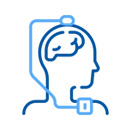
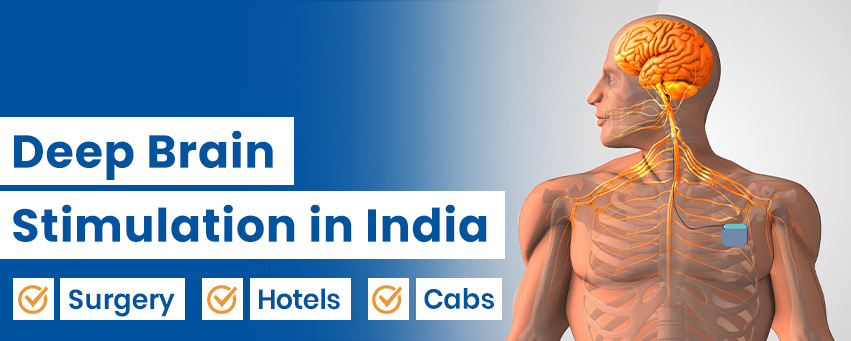
Patients in most African countries, such as Ghana, Uganda, Zambia, and Rwanda, seek medical care in other countries, especially with dbs brain surgery. This is mainly due to the inadequacy of healthcare facilities and resources and exceptional fertility services. Also, many Africans find reliable care in other countries known to have excellent health services. This phenomenon depicts how stressful things have become relating to the kind of treatment that is delivered in local health care.
India has now become the best destination for the deep brain stimulation operation for parkinson's disease treatments, attracting many patients from Africa. India has the best medical infrastructure, well-trained DBS doctors, and specialized hospitals for neuro treatments. Also, the cost of deep brain stimulation implants is low compared with many other places around the world. Thus, it makes the country a fabulous destination for patients from Africa to treat their diseases.
The field of neurological treatment is being completely transformed by deep brain stimulation operation, which is at the forefront of innovative medical therapies. DBS brain surgery is a treatment approach that includes implanting electrodes into particular brain regions and then delivering regulated electrical impulses. Mainly utilised to reduce symptoms in diseases such as essential tremor, dystonia, and Parkinson's disease, DBS surgery has become a ground-breaking method that provides alleviation where conventional therapies might not be sufficient.
Often referred to as deep brain stimulation operation in India, the procedure requires precision and expertise. Through the modulation of abnormal brain activity, DBS significantly reduces symptoms and improves the quality of life for patients. This technical marvel is a prime example of the revolutionary potential of DBS in solving complex neurological issues, demonstrating the incredible connection between neuroscience and medical innovation.
A surgical procedure called deep brain stimulation operation is used to treat individuals with movement problems like Dystonia, Parkinson's disease, and essential tremor. It can also be used to manage the symptoms of epilepsy and obsessive-compulsive disorder. When patients can no longer maintain a good quality of life with medication, deep brain stimulation operation is used. A pacemaker-like device positioned under the skin in the upper chest regulates the amount of stimulation during deep brain stimulation. The electrodes in the brain are connected to this device by a wire that passes beneath the skin.

Each human brain has billions of neurons, which exchange signals with one another chemically and electrically. Neurons in various regions of your brain can become less active due to a variety of brain diseases. That causes certain areas of your brain to function less effectively. You may experience disturbances in the functions governed by the affected area of the brain. DBS can alleviate the symptoms of a variety of brain disorders by stimulating those neurons with an artificial electrical current.
DBS surgery is not merely a surgical process. Individuals interested in receiving treatment with DBS surgery should be ready to devote time to the process, which entails several assessments, actions, and consultations both before and after the actual procedure.
Electrical signals in the brain regions responsible for controlling movement become disordered, leading to movement-related symptoms in Parkinson's disease and other neurological diseases. When DBS is effective, it stops the erratic impulses that result in tremors and other symptoms related to movement.

During a battery of tests to establish the ideal location, neurosurgeons insert one or more wires, referred to as "leads," into the brain. An insulated cable extension connects the leads to a tiny electrical generator, or neurostimulator, that is implanted beneath the patient's collarbone and functions similarly to a heart pacemaker. Electric current pulses from the neurostimulator are continuously sent into the brain through the leads when deep brain stimulation implants.
The neurostimulator is implanted, and a few weeks later the doctor programs it to provide an electrical signal. To make sure that the current is correctly regulated and producing the desired outcomes, this programming process may require multiple visits spread over several weeks or months. The physician aims to strike the best possible balance between reducing side effects and enhancing symptom control when modifying the device.
As a ground-breaking therapeutic method, deep brain stimulation operation (DBS) has gained popularity and provided comfort and hope to those suffering from a variety of neurological conditions. Electrodes are surgically implanted into particular brain regions, and this treatment has demonstrated exceptional effectiveness in treating a variety of disorders. Let's explore the kinds of illnesses that have found relief through brain stimulation surgery.

The deep brain stimulation applications have been leading the way for Parkinson's disease, a neurodegenerative condition that impairs movement control. Deep brain stimulation operation for Parkinson's disease treatment addresses the subthalamic nucleus or the globus pallidus interna, seeking to control aberrant neuronal activity. Through the use of implanted electrodes to provide electrical impulses, DBS can significantly enhance the quality of life for patients by reducing motor symptoms such as bradykinesia, stiffness, and tremors.
Another condition that deep brain stimulation operation in India has proven to be effective in treating is essential tremor, which is characterized by rhythmic shaking, frequently in the hands. DBS can effectively decrease tremors and restore control over daily activities. It typically targets the ventral intermediate nucleus of the thalamus. For people who have not responded well to medicine, DBS is a beneficial choice due to its precision and adjustability.
Although dystonia is a relatively uncommon movement disorder, when medication is unable to adequately relieve its symptoms, such as aberrant postures and twisting motions, deep brain stimulation operation can help. The underlying reason for a person's dystonia is genetic, drug-induced, or caused by another factor that determines how that person will react to DBS surgery. The doctor will probably order more tests as part of the DBS workup if the reason is unknown.
DBS surgery helps patients with this difficult disorder work better and experience a considerable reduction in symptoms by precisely adjusting the brain activity causing the aberrant muscular spasms.
Studies on the potential of DBS surgery as a therapeutic technique have been conducted for epilepsy, a disorder characterized by recurring seizures. While it might not be the first option in every case of epilepsy, DBS surgery has shown promise in lowering seizure frequency in certain people when applied to particular brain regions. Further research is being conducted to improve and broaden the use of deep brain stimulation operation in the context of treating epilepsy.
The effectiveness of DBS in treating cognitive decline in Alzheimer's disease is being investigated. DBS surgery has potential as a treatment option for this difficult illness since it targets particular brain regions linked to memory and cognitive function.
Deep brain stimulation involves delivering electrical impulses to specific areas of the brain to help regulate abnormal activity and improve the quality of life for patients with neurological conditions. In India, the adoption of DBS technology has increased rapidly, thanks to the system's high success rates and increased accessibility to advanced medical equipment. Two of the most trusted and used DBS systems in India are the VERCISE and PERCEPT PC systems, both known for their advanced technology and improved clinical outcomes.

Developed by Boston Scientific, a leader in manufacturing scientific medical devices and one of the most trusted names in neurostimulating technology, the VERCISE DBS system is a highly advanced implantable device engineered for accurate targeting and low-intensity electrical stimulation of the brain’s nerve centres. It is commonly used to treat Parkinson’s disease, essential tremor, and both primary and secondary dystonia. Known for having the longest battery life among DBS devices, this system is preferred by neurologists and neurosurgeons all over India because of its high success rate, maximised therapeutic benefits, and minimal side effects.

Developed by Medtronic, a leading global medical technology company with decades of experience in treating neurological disorders, the PERCEPT™ PC system is a first-of-its-kind, recharge-free DBS device that integrates three advanced features into one single device—brain signal sensing, directional stimulation, and a visual programming interface. It includes sensing technology that captures brain signals in real time, directional stimulation for more precise targeting within the brain, and a user-friendly visual programming interface that simplifies adjustments with data-driven guidance. This feature helps doctors develop personalised DBS treatment strategies that are tailored to each patient’s unique brain activity patterns.
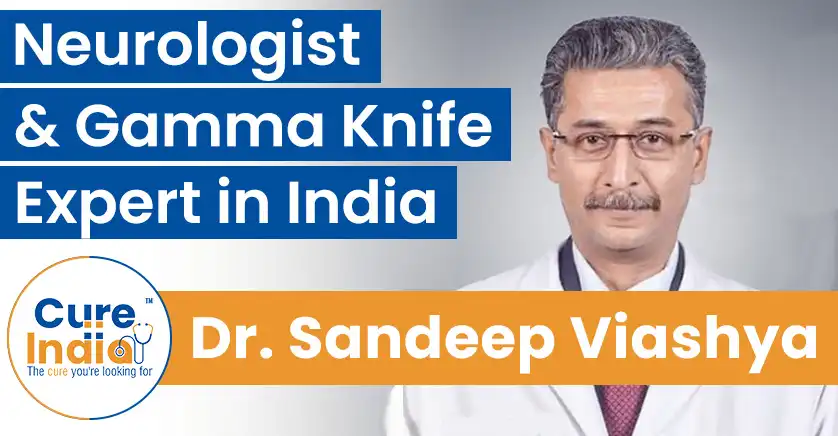
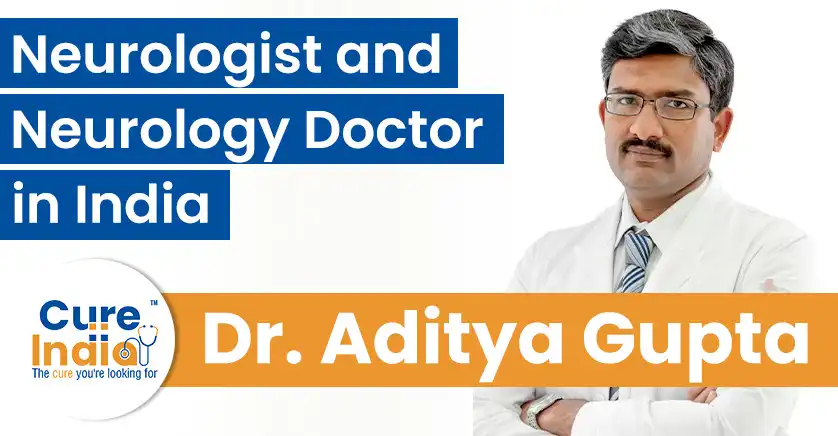
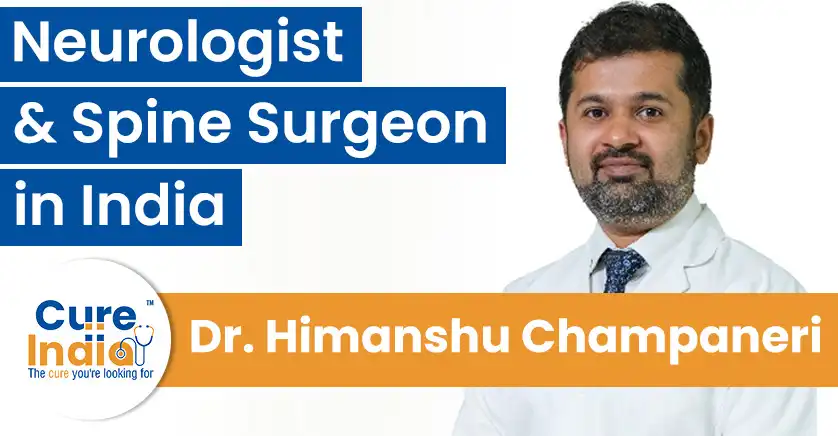

The cost of DBS surgery in India is much cheaper with low waiting time, compared to the high surgery costs and high waiting time in countries like the US, UK and Australia. The cost of DBS surgery in India is:
| Treatment | Cost in India | Stay in India |
|---|---|---|
| DBS Surgery in India | $36,000 | 2 Weeks |
Actually, two to three procedures are required for DBS surgery, and they typically take place at separate times. The stimulation leads are inserted into each side of your brain either simultaneously or separately during the first one or two procedures. The stimulator battery, often referred to as a pulse generator, is implanted beneath the skin of your upper chest during the second procedure.
To provide you with intravenous (IV) fluids before these surgeries, your healthcare professional will often install an IV line. They can also administer any necessary medication to you via an IV throughout the surgery.
Your doctor would typically begin this process by shaving the hair on your scalp. This facilitates positioning your head within a specific frame that will keep it motionless. An intraoperative CT scanner will be utilized to capture pictures of your brain and determine the trajectory for the electrode implantation once the frame has been fixed.
Once the CT scan is completed, the entrance point is identified, anaesthesia is restored, and surgery prep is administered to your head. They will make the incision and then use a surgical drill to create a tiny aperture in your head so that the leads may be inserted. Depending on why the deep brain operation is being performed, you may be awakened for conscious testing.
Your case determines how many leads you receive and where they are placed. On one or both sides of their skulls, some people may have more than one lead, while others may only have one. After the electrodes are in place, they are tunnelled under your skin to the back of your head and their ends are covered with a plastic cap.
A variety of deep brain stimulation devices are available from Medtronic, a leader in medical technology, to treat neurological disorders such as essential tremors and Parkinson's disease. These gadgets fall into two main categories: non-rechargeable and rechargeable, each of which is intended to meet a distinct set of patient requirements.
Medtronic's rechargeable DBS devices are distinguished by their affordability and extended lifespan. Because these implants have a rechargeable battery, users can increase the device's longevity by routinely recharging it. Patients managing chronic illnesses now have a more convenient and durable option, and the frequency of surgical operations for battery replacement is reduced. Rechargeable DBS devices such as the Medtronic Percept™ PC and Activa RC are well-known models that provide enhanced control and personalisation choices for therapy that are optimal.
However, non-rechargeable brain stimulation devices, such as the Medtronic Activa PC and SC, are made for patients who might choose a less complicated upkeep schedule. The non-rechargeable battery that powers these gadgets has a set lifespan. Patients get surgery to replace their deep brain stimulation batteries when the battery runs out of power. This intervention guarantees the therapy's ongoing effectiveness and is a standard part of managing non-rechargeable devices.
Deep brain stimulation battery replacement is an essential part of providing long-term care for those using deep brain stimulation devices. Rechargeable systems usually require replacement less frequently typically every 5 to 10 years, depending on usage. In contrast, non-rechargeable gadgets may demand more regular replacements, often every 1 to 3 years. Because battery replacement surgery is a common treatment carried out by experienced neurosurgeons, there is little to no disruption to the patient's life.
Deep brain stimulation implants have become a ground-breaking treatment for several neurological conditions. This revolutionary method provides amazing therapeutic advantages through precise electrical stimulation. The continuous research and advancements in DBS technology highlight its capacity to improve the standard of living for people coping with ailments such as Parkinson's disease and essential tremors. This novel approach demonstrates great promise for improving patients' quality of life.